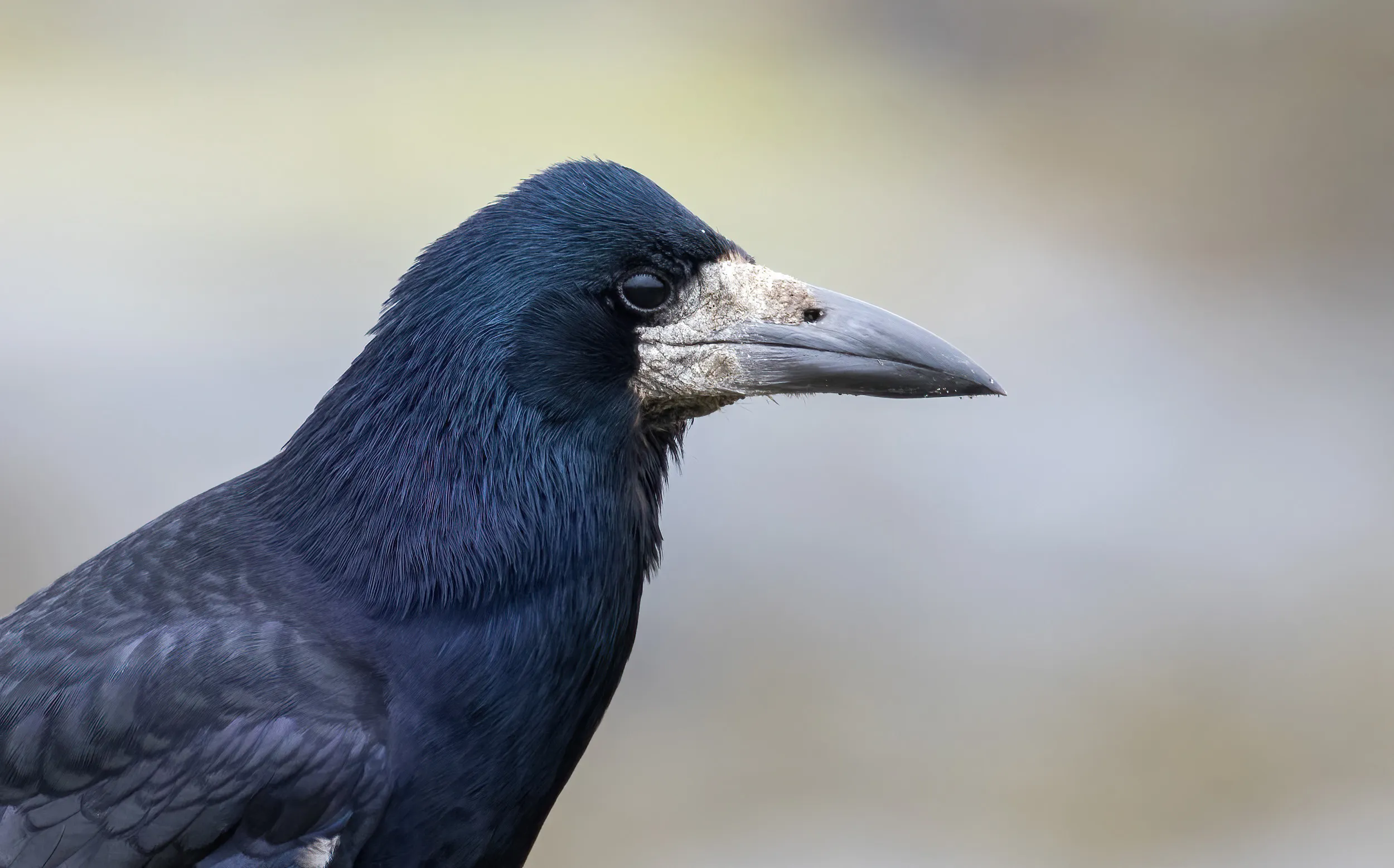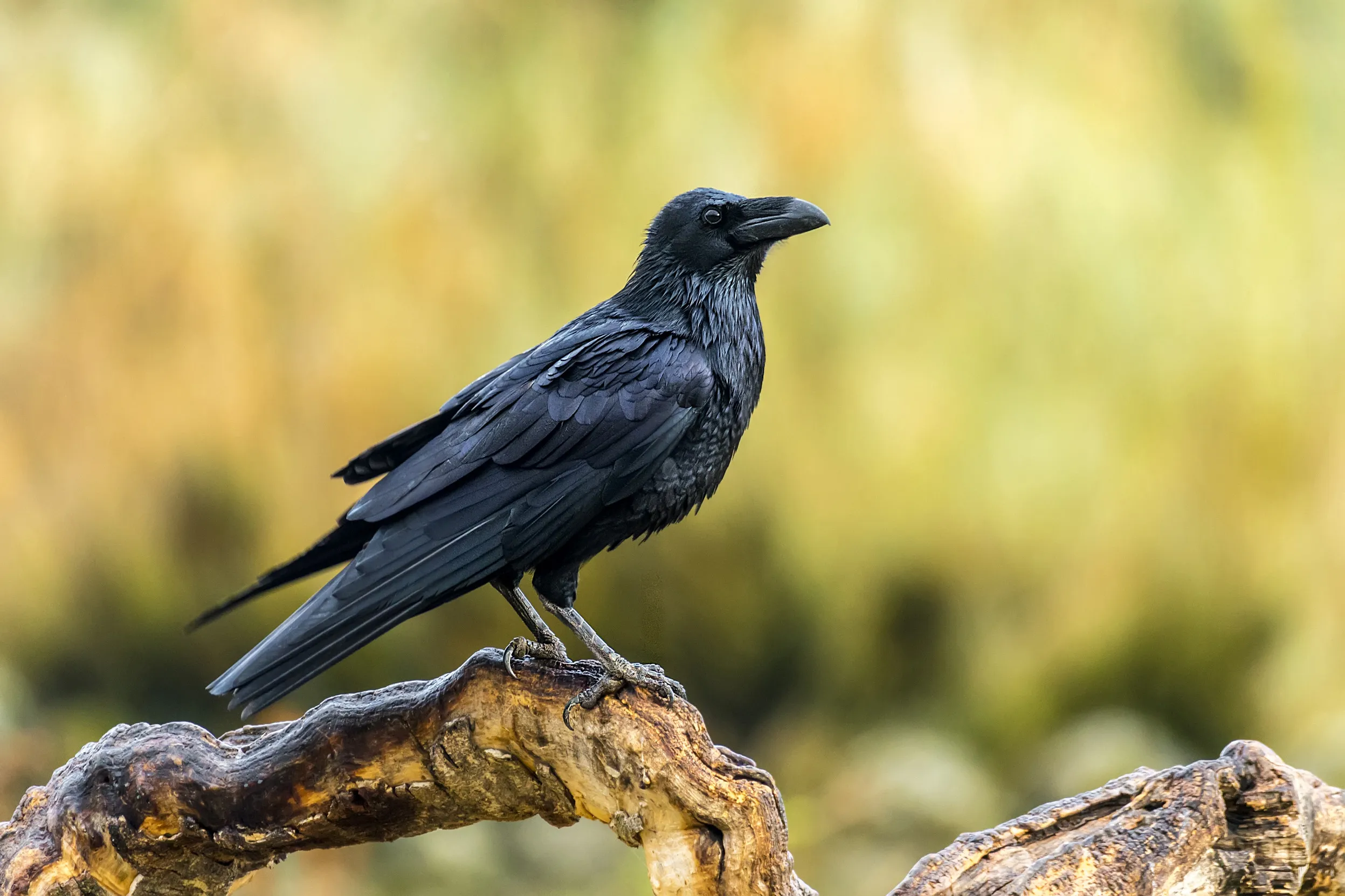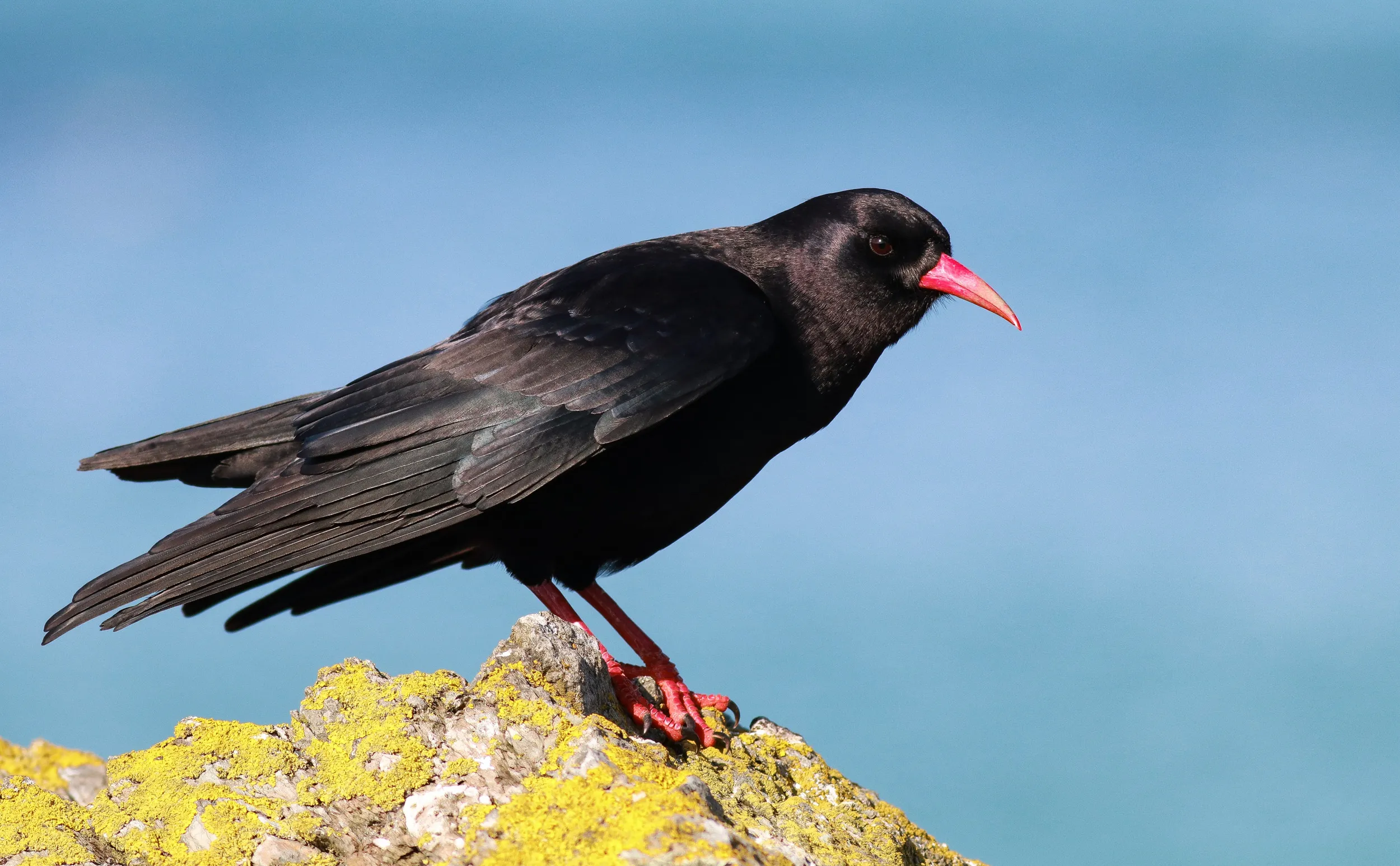
- Length: 45–47cm
- Wingspan: 93–104cm
- Weight: 370–650g
Many of the UK’s most common corvids – members of the crow family – sport all-black plumage, which can make identification a bit of a headache. But once you know what to look for, there are easy ways to tell the difference.

There are eight different species of corvid in the UK and four are quite common: Carrion Crows, Rooks, Jackdaws and Magpies. Ravens are less common, but their numbers are now recovering from decades of persecution.
Jays are the UK’s only colourful corvid, but although they’re widespread, they’re also shy and can be difficult to see. The final two – Hooded Crows and Choughs – are much less common and have a restricted range. Of all the UK’s corvids, Carrion Crows, Rooks, Ravens and Jackdaws are the easiest to confuse, so take a look at these useful ID tips.
UK conservation status - Green

Carrions Crows (usually just referred to as ‘Crows’) are often seen on their own, flying low over fields and gardens, or sitting in trees or on fence posts looking for their next meal. You do also see them in pairs or small groups, and like most corvids, they become a bit more sociable in winter, even joining mixed flocks of Rooks and Jackdaws. They’re opportunistic birds and have a broad diet, eating everything from scraps on city streets, to seeds and fruits, carrion (hence their name), eggs and young birds. They will visit garden feeders, most often making nervous hit-and-run raids on open bird tables.

Crows are noisy birds. Their most common call is a loud, harsh ‘caa-caa’ that’s usually repeated several times.
Crows build their stick nests in a variety of locations, including on buildings, cliffs, pylons and trees. They tend to be more secretive about their nests than Rooks or Magpies.
All year round
Crows are really adaptable and can thrive in many different habitats. They could turn up anywhere from big cities to the seaside. You’ll also spot them on farmland, moorland, woodland and in suburban gardens. They’re widespread across the UK, except in the north and west of Scotland, and Ireland, where they’re largely replaced by the distinctive grey and black Hooded Crow. Hooded Crows and Carrion Crows do sometimes interbreed resulting in interesting colour variations along the borders of their range.

In Japan, Carrion Crows have been seen dropping nuts onto roads, waiting for cars to drive over them and crack open the outer shell, dashing out to retrieve their tasty treat when the traffic lights turn read!
UK conservation status - Amber

Rooks are sociable birds and spend much of the year together in big groups, feeding, roosting and even nesting in close quarters. This behaviour can be a useful distinguishing feature for Rooks and Crows, particularly in the breeding season, but it’s not definitive, as both species can be seen singly and in groups. In winter, Rooks can join up with other corvids (particularly Jackdaws) to roost together. These groups often perform impressive dusk and dawn displays where they fly around together, calling loudly. Like all corvids, Rooks are opportunistic, resourceful birds, and they have a broad diet including insects, seeds, small birds and eggs, as well as small mammals.
.jpg)
The call is similar to that of Crows, but is usually a bit softer and hoarser, without the ringing clarity of a Crow’s ‘caa-caa’. You can often hear several calling at once.
Rooks nest communally in the top branches of mature trees. These ‘rookeries’ can be very large and distinctive, with the messy nests clearly visible in bare branches over winter. Rookeries are often in use for years, sometimes decades. Rooks are early nesters, and from February they can be seen flying back to their rookery carrying comically large sticks as they seek to repair winter damage.
All year round
Rooks are most common in the countryside, and you might see rookeries in banks of mature trees between farm fields and in rural villages. They will venture into towns too, if the right habitat is available. Large flocks of Rooks are often seen in fields or mobbing birds of prey.
Rooks have very good memories and will bury food – a behaviour known as ‘caching’ – then return later to retrieve their snack.
UK conservation status - Green

Ravens are super-smart birds and can often be seen engaging in playful behaviour. They have a distinctive heavy, soaring flight and sometimes flip upside down with closed wings, possibly just for fun. They’re often seen in pairs, but particularly in the winter, young birds can come together to roost in big groups. Ravens are mostly carrion eaters, but they will eat insects and hunt small live prey.

The call of a Raven is often described as ‘cronk-cronk’. It’s very deep, throaty and powerful – you could think of it as the Barry White of bird calls!
Ravens usually mate for life and remain together in pairs throughout the year, defending their territories even in winter. They’re early breeders and build their stick and moss nests from mid-February on cliff ledges, in large trees, or sometimes on buildings or other structures like bridges. They tend to have a few well-used sites and rotate between them on alternate years.
All year round
Ravens were once heavily persecuted as pests on farmland and game estates, but protection has helped their numbers recover. They do sometimes nest in big cities, and if you look up, you might see them soaring and tumbling high above. You’ll also see them on farmland, in the uplands and mountainous areas, or near seaside cliffs. You’d be very lucky to see one in your garden!

Ravens feature in lots of myths and legends. To the Native Americans, the Raven was a trickster, to the Norse, a faithful companion of Odin, and to the Greeks, a messenger of Apollo. Even to this day, it’s said that if the Tower of London loses its resident Ravens, the kingdom itself will fall.
UK conservation status - Green

Jackdaws seem to be more comfortable with people than Crows or Rooks, though they’re still cautious. They often nest in buildings and can be seen perched on chimneys and rooftops, or walking around pavements looking for food, often singly or in pairs. In the air, they have a faster flight than the bigger corvids and can be very playful, with tumbling aerobatics. In the winter, Jackdaws often come together in groups to roost, sometimes with Rooks, and perform noisy display flights at dusk and dawn. They eat insects, seeds and fruit, but will also take eggs and young birds.

Jackdaws pretty much say their name, with a ringing ‘jack’ or ‘chack’ call sometimes, but not always, followed by a softer ‘tyaw’. They also have a ‘caw’ call. Jackdaw chicks are very noisy in the nest when they’re being fed.
Jackdaws are well known for nesting in chimneys, but they also nest in outbuildings, large buildings like churches, on cliffs, in tree holes, or in large nest boxes.
All year round.
Jackdaws aren’t as common in big urban centres, but they will live in smaller towns and villages, or older suburbs where there are houses with chimneys. They also live in parks, woods, farmland and around sea cliffs. They will visit gardens looking for food or nesting materials, and come to feeders and bird tables, but they don’t tend to hand around for long.

Scientists have shown that Jackdaws can recognise individual human faces.

At first glance, Magpies might look black and white, but in bright sunlight their wing and tail feathers reveal a beautiful purply-blue sheen. Magpies are opportunistic survivors, and are often seen and heard in cities and gardens. They have a loud rattling call.

You might mistake a flock of tumbling Choughs for Jackdaws, as they look quite similar from a distance. However, up close Choughs are very distinctive with long red beaks and red legs. They have an extremely limited range and you’re most likely to see them in south-west Scotland, the Isle of Man, the west coasts of Wales and Ireland, and in parts of Cornwall.

Identical in size and shape to Carrion Crows, Hooded Crows have a black head, wings and tail, with a grey back and underparts. They are usually only seen in Ireland, Northern Ireland, and north and west Scotland.